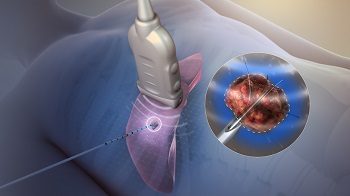How Much Does A Radiofrequency Ablation Cost?
Last Updated on September 24, 2024
Written by CPA Alec Pow | Content Reviewed by ![]() CFA Alexander Popinker
CFA Alexander Popinker
Radiofrequency ablation (RFA) has emerged as an innovative, minimally invasive alternative to surgery for chronic nerve and joint pain relief. But the high-tech equipment and specialist expertise involved understandably come at a price. So, what exactly does this advanced pain treatment cost on average?
In this guide, we provide a comprehensive breakdown of radiofrequency ablation pricing. You’ll understand the full range of costs based on factors like geographic location, provider qualifications, facility fees, and insurance coverage levels. We’ll outline both national averages as well as cost comparisons in major cities. You’ll also learn about financing options to offset expenses along with tips for controlling costs.
Our goal is to provide the in-depth information you need to budget appropriately for radiofrequency ablation and set realistic expectations before undergoing treatment.
How Much Does A Radiofrequency Ablation Cost?
On a national average, the cost for radiofrequency ablation spans between $2,500 to $4,500 per RFA session when factors like insurance coverage are considered.
However, numerous variables including those below can alter costs higher or lower:
- Geographic location of treatment
- Experience level of the doctor
- Type of facility where performed
- Amount of guidance imaging utilized
- Type and dosage of anesthesia administered
- Number of nerve sites requiring ablation
According to MDsave, the estimated cost for a radiofrequency ablation procedure ranges from $1,943 to $5,478. This pricing is particularly relevant for patients who are uninsured or have high deductible health plans, as MDsave allows patients to shop for procedures and pay upfront to potentially save costs.
In a more specialized context, a study referenced on PubMed indicates that radiofrequency ablation for benign thyroid nodules was assumed to cost around $5,000 per procedure. This study also highlighted that the total cost associated with radiofrequency ablation, when considering quality-adjusted life years (QALYs), was approximately $16,563 when compared to other surgical options like lobectomy.
Additionally, WebMD discusses costs related to atrial fibrillation treatments, which may include radiofrequency ablation. They report that catheter ablation procedures can range from $21,000 to $26,000, reflecting the complexity and resources involved in such interventions.
Another source, Healthline, states that the average cost of radiofrequency ablation for various conditions can vary widely but generally falls within the range of $1,500 to $7,000 depending on factors such as location and specific medical circumstances.
Introduction to Radiofrequency Ablation
First, a quick recap of what radiofrequency ablation involves:
- Using radio wave energy to heat and destroy targeted nerves
- Delivered via needles inserted near affected nerves
- Disrupts pain signals transmitted by overactive nerves
- Provides temporary pain relief while nerves regenerate
- Utilized for chronic pain conditions involving joints, lower back, neck
Radiofrequency Ablation Cost Breakdown
The primary expenses that make up the total cost of RFA include:
- Physician professional fees – $650 to $1,800
- Operating room and facility charges – $750 to $3,000
- Anesthesia fees – $300 to $800
- Imaging guidance (CT, MRI, x-ray) – $650 to $2,000
- Medical supplies – $300 to $1,000
- Follow-up appointments – $250 to $500
Other smaller ancillary, pharmacy, and laboratory costs may also be involved.
Factors Impacting Radiofrequency Ablation Pricing
Several key considerations have an outsized influence on the overall cost of RFA:
Experience Level of the Clinician Performing RFA – Board-certified pain management specialists have extensive expertise, warranting higher professional service fees.
Type of Imaging Guidance Used – CT, MRI, or live x-ray (fluoroscopic) guidance involves added technology expenses but improves accuracy.
Anesthesia Type and Administration – General anesthesia administered by an anesthesiologist costs more than local anesthesia or mild IV sedation.
Surgical Facility Charges – Hospital operating rooms bear higher overhead costs compared to outpatient surgical centers.
The Number of Ablation Lesions Needed – Treating multiple nerve sites or additional facet joints increases procedural time and materials.
Insurance Plan and Deductible Details – Out-of-pocket deductible amounts and coinsurance rates greatly sway the patient responsibility costs.
Ask your doctor how these factors may alter your total costs.
You might also like our articles about the cost of IVIG treatment, stem cell therapy, or Chiropractic treatment.
Costs by Location
Location significantly impacts RFA costs based on average healthcare expenses:
Midwestern and Southern Region Pricing
- Physician fees – $700 to $1,500
- Anesthesia – $400 to $700
- Facility – $600 to $1,200
- Imaging – $800 to $1,500
- Supplies – $400 to $800
- Total Cost – $3,000 to $5,000
Western and Northeastern Region Pricing
- Physician fees – $900 to $2,000
- Anesthesia – $500 to $900
- Facility – $800 to $1,800
- Imaging – $900 to $1,700
- Supplies – $500 to $1,000
- Total Cost – $4,000 to $6,500
However, local market dynamics and a provider’s reputation greatly sway costs.
Expenses and Fees Involved
Let’s examine the major components that comprise total RFA costs more closely:
Physician Professional Fees
- Expertise commands higher hourly rates – often $800-$1500/hour
- Covers pre-procedure consultation and reading of imaging
- Fees for actual RFA procedure time
Anesthesia Fees
- Approximately $150-$250 per hour of anesthesia administration
- General anesthesia is more complex than conscious sedation
- Anesthesiologist vs nurse anesthetist credentials impact costs
Operating Room and Facility Fees
- Overhead expenses for equipment, nursing staff, and facility upkeep
- Hospital operating theatres range $1,000-$4,000 per case
- Outpatient surgical center fees typically $500-$2,000
Medical Supplies and Medications
- Single-use specialized radiofrequency needles – $100-$300 each
- Anesthetic and contrast agents – $50-$200 per dose
- Bandages, surgical trays, disposable items
Follow-Up Appointments
- Typically, 1-3 brief postoperative follow-ups to assess pain relief
- Follow-up office visit fees range $100-$300 per appointment
Imaging Guidance Expenses
- CT, MRI, or fluoroscopy costs $500-$2,500 per use
- Improves needle placement accuracy for better pain relief
Specialist vs General Practitioner
 RFA expertise levels impact pricing:
RFA expertise levels impact pricing:
Specialty Pain Management Physicians
- Extensive RFA knowledge and procedural skill
- Comfort treating complex nerve pain cases
- Provide integrated, multidisciplinary pain care
- $3,500 to $5,500 per session
General Practitioners or Surgeons
- Limited RFA patient volume and expertise
- Primarily offer RFA for back pain or joint arthritis
- $2,500 to $4,000 per session
Specialist experience commands a pricing premium but may offer greater pain relief.
Insurance Coverage
Radiofrequency ablation coverage varies greatly between policies:
- Medicare – Covered with 20% coinsurance under Part B. About $300 out-of-pocket per session.
- Medicaid – Varies by state Medicaid program with some requiring preapproval.
- Private Insurers – Have own criteria for pain conditions warranting coverage. Call to verify.
Always check coverage details in advance and obtain pre-authorizations where required. Be prepared for deductibles, copays, and coinsurance obligations.
Out-of-Pocket Expenses for RFA
Even with insurance, some common out-of-pocket costs include:
- Insurance copays – often 20% of procedure fees
- Payments toward deductible – avg $1,500 for individuals
- Coinsurance – if only covered at 60-80%
- Anesthesia, meds, dressings – 30% avg coinsurance
- Follow-up visits – specialist copay up to $100
Budget appropriately for potential medical expenses not covered.
Payment Plans and Financing Options
If facing large bills, flexible payment options exist:
Payment Plans – Spread costs over 6-12 months through payment arrangements negotiated directly with providers
Medical Credit Cards – Specialized cards offering long 0% APR introductory periods, allowing time to pay off expenses
Medical Billing Advocates – Professionals who negotiate lower pricing on patients’ behalf
Hospital Charity Care Programs – Provide fee reductions or forgiveness for qualifying low-income individuals
Explore all opportunities to ease the financial burden associated with RFA procedures.
How Successful is Radiofrequency Ablation?
While relief duration varies, most patients require multiple RFA treatments over time:
- Initial procedure provides roughly 9 months of pain relief, sometimes shorter or longer
- 2-4 repeat sessions often needed over 2-3 years for sustained results
- Each repeat procedure incurs the same facility, physician, and anesthesia fees
- Offer less pain relief than the initial ablation, about a 6-month reduction
Factor in costs of potentially multiple visits when budgeting for RFA therapy.
Risks and Complications
While rare, discuss potential RFA risks with your physician:
- Allergic reaction to injected drugs or contrast dye
- Bleeding, swelling, bruising at insertion site
- Temporary numbness or nerve pain from accidental contact
- Infection at needle puncture sites
- Inadvertent damage to nearby structures like blood vessels or organs
Thankfully complications are infrequent with experienced RFA specialists guiding treatment.
Procedure codes, billing, and medical claims
From a billing standpoint, insurers require coding details like:
- Specific nerve(s) ablated (e.g., medial branch, dorsal root ganglion)
- Number of nerve lesions created
- Imaging guidance used (fluoroscopy, CT, MRI)
- Type of anesthesia administered (local, IV sedation, general)
- Facility setting where performed (hospital, ambulatory center)
Providing complete documentation helps facilitate maximum insurance claim reimbursements.
Lowering Radiofrequency Ablation Costs
Every dollar counts – ways to reduce RFA costs include:
- Choosing outpatient surgical centers over hospitals when adequate
- Using in-network providers covered under your insurance plan
- Negotiating discounted cash-pay rates directly with clinics
- Seeing if payment assistance or charity care programs apply
- Comparing costs between specialists to find most reasonable fees
- Checking for bundled discount packages if multiple sites are treated
Shop around and utilize all possible discounts to make RFA more affordable.
Final Words
Total radiofrequency ablation costs often range from $3,000 to $5,000 per session, with multiple repeat visits frequently needed for sustained benefits.
While expensive, particularly if insurance coverage proves limited, RFA offers a nonsurgical option for long-term pain management without major recovery time, lost wages, and surgical risks. Just be sure to thoroughly discuss your pain relief goals with your treatment providers to confirm undergoing RFA suits your needs and condition.
Answers to Common Questions
Who can benefit from radiofrequency ablation?
RFA offers greatest pain relief for those suffering from chronic nerve pain originating in joints, the lower back, and neck. Ideal candidates have localized pain that has not responded sufficiently to medications, physical therapy, or other conservative treatments.
What frequency is used for ablation?
RFA utilizes radiofrequency wavelengths in the 375–500 kHz range. This energy heats targeted nerve tissues between 45-80 degrees Celsius, disrupting their ability to transmit pain signals without actually severing the nerves.
How long does pain relief from RFA last?
On average, the beneficial effects of an initial radiofrequency ablation procedure last between 9-14 months. But pain duration can be shorter or longer depending on the individual. Multiple sessions are usually needed to provide sustained pain management over the long-term.

Leave a Reply
Want to join the discussion?Feel free to contribute!